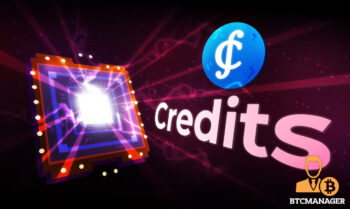
2023-10-4 22:41 |
Modern blockchain networks are increasingly built using a layered architecture to take advantage of the increased scalability and versatility it provides. Blockchain layering refers to the way in which different functionality is handled by separate layers in the network, with each one fulfilling a different purpose.
The most common layers found in blockchains are Layer-1 and Layer-2. L1s, as they’re generally known, refer to the foundational blockchain platforms, such as Bitcoin and Ethereum. These networks are well understood, and power their own native token to reward those who perform tasks such as mining cryptocurrency and validating transactions to secure the network. The native tokens of these platforms are used to perform transactions and facilitate the exchange of value.
As for L2s, these are designed to speed up the transaction throughput of L1s, enabling them to be processed more rapidly. They’re often known as scaling solutions, and can help to ease the logjam that affects traditional L1 networks. Both Bitcoin and Ethereum experience heavy network congestion at busy times, and it can sometimes take hours for transactions to be processed and confirmed. L2s speed up transactions and reduce the network fees, while continuing to leverage the security of the main L1 network.
Arbitrum and Polygon are some of the best-known L2s. They were developed to solve Ethereum’s slow transaction speeds and high gas costs. Their use has led to some breakthrough innovations in areas such as decentralized finance, with many new protocols taking advantage of the higher scalability and transaction throughput to enable rapid and more sophisticated trading, for example.
As for L3s, these are a more recent innovation that not only accelerates transactions and reduces fees but also provides advanced customization and functionality, while increasing security and privacy.
Examples of Layer-3 NetworksOne of the earliest L3 networks to emerge was StarkWare, which first proposed the concept of a multi-layered architecture built on top of Ethereum. It has developed both an L2 and an L3, with the former acting as a general-purpose scaling solution, while the latter performs more customizable scaling. Projects that use StarkWare’s L3 make use of customized circuits that can drive better performance for specific DeFi applications.
A much more recent innovation in L3s is Yellow Network, which acts as an automated smart clearing protocol, performing the same function as a clearing house in traditional finance. It can be thought of as a mediator that sits between different crypto exchanges and market makers.
Crypto exchanges and market makers can join Yellow Network to gain access to its clearing system. They deposit YELLOW tokens to be able to open state channels and must then deposit stablecoins within each one to cover counterparty risks. Once the state channel is opened, the exchange can then engage in high-frequency trading off-chain, interacting with other exchanges and market makers using the network. Once the trading activity is finished, the state channel will be closed, and all transactions will be resolved on-chain.
Another example of an L3 is Orbs, which aims to provide higher transaction throughput at lower costs for decentralized apps. It leverages the security of the L1 network while exploiting the scalability of L2s, adding its own smart contract deployment layer to enhance the Ethereum Virtual Machine’s functionality. In this way, Orbs helps dApps to increase compliance and perform more complex transactions.
Driving Cross-Chain InnovationIn the case of Yellow Network, it will enable brokers and exchanges to benefit by aggregating liquidity across both platforms and blockchains, reducing market fragmentation and adding depth, while mitigating areas of conflict.
By aggregating liquidity, Yellow Network and other L3s can help smaller and more specialized market participants to offer better pricing and transact higher volume trades. For end users, they have the convenience of trading a greater number of token pairs without needing to bridge across chains.
The main benefit of L3s is that they provide an enhanced connectivity layer that can pave the way for collaborative and synergistic interactions between dApps, and help to reduce the fragmentation that has become so apparent in the blockchain industry, bringing ecosystems closer together.
Another notable advantage of L3s is their ability to customize the economic incentives, governance mechanisms and rules of each dApp, allowing for better experiences for end users.
The Future Is LayeredL2 networks have already cemented their place in the blockchain ecosystem, where they function as very capable general-purpose scaling solutions and solve key pain points for some of the biggest chains. However, it seems likely that the future of blockchain is one of multi-layered networks, which drive innovative ways to optimize costs and efficiency even further.
By utilizing L3s, blockchains will be able to scale to unprecedented heights that weren’t possible before. At the same time, dApps can take advantage of L3 scaling customization to offer their users greater functionality. As a result, blockchain will be able to make its impact felt in a much wider range of industries, paving the way for more widespread adoption than we see today.
origin »High Performance Blockchain (HPB) на Currencies.ru
|
|





















